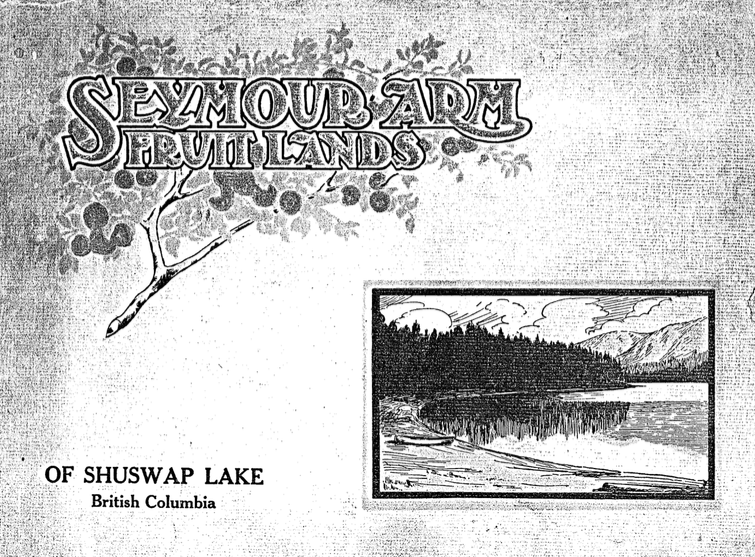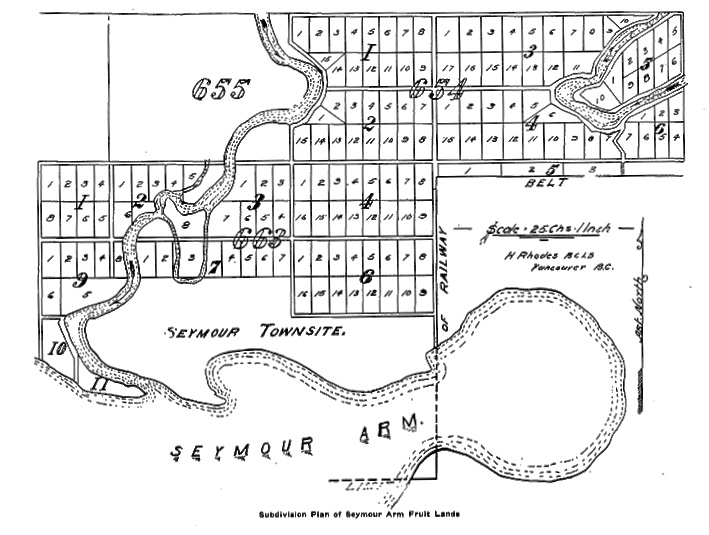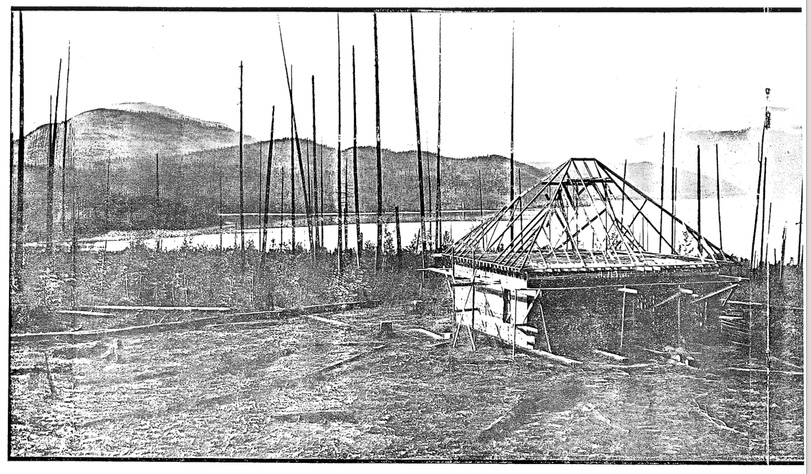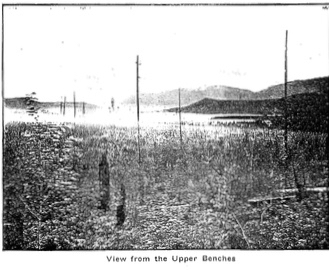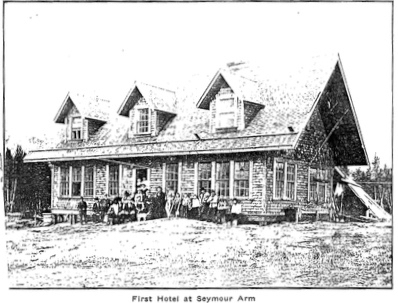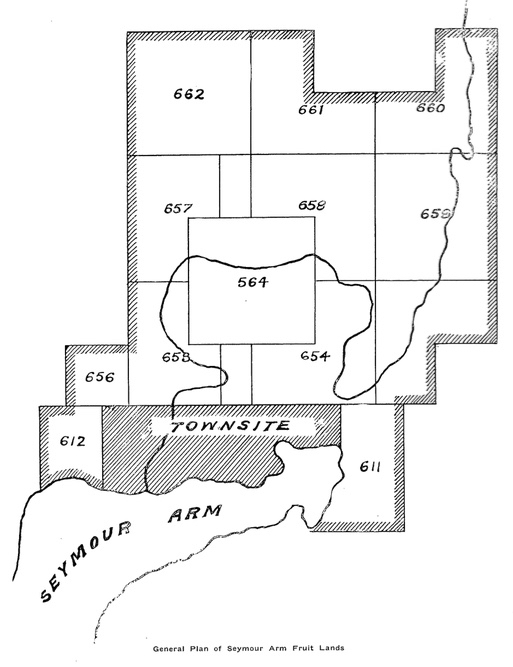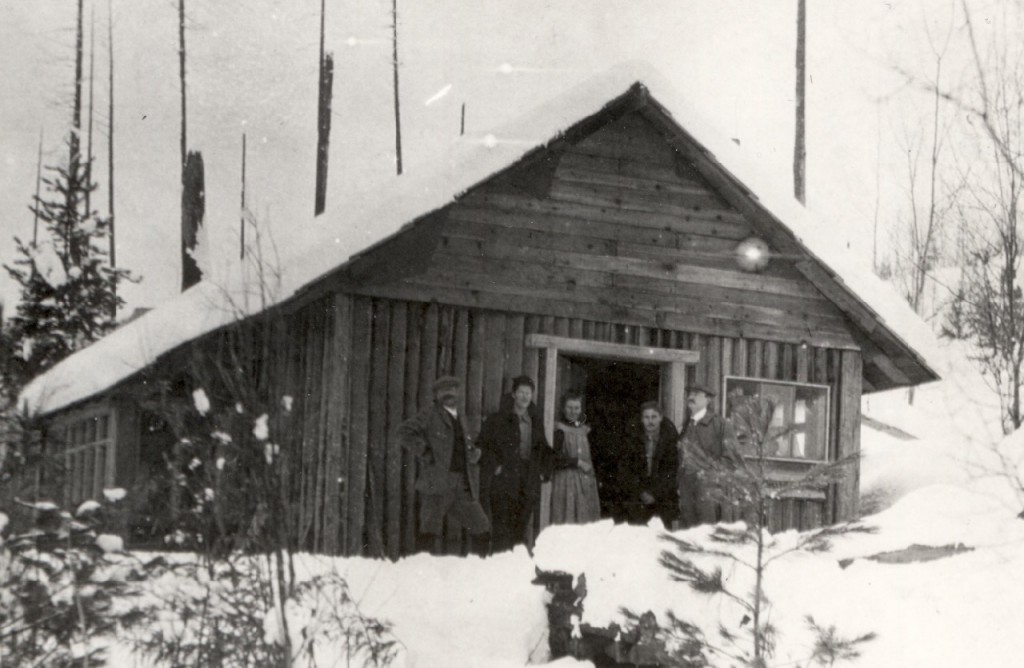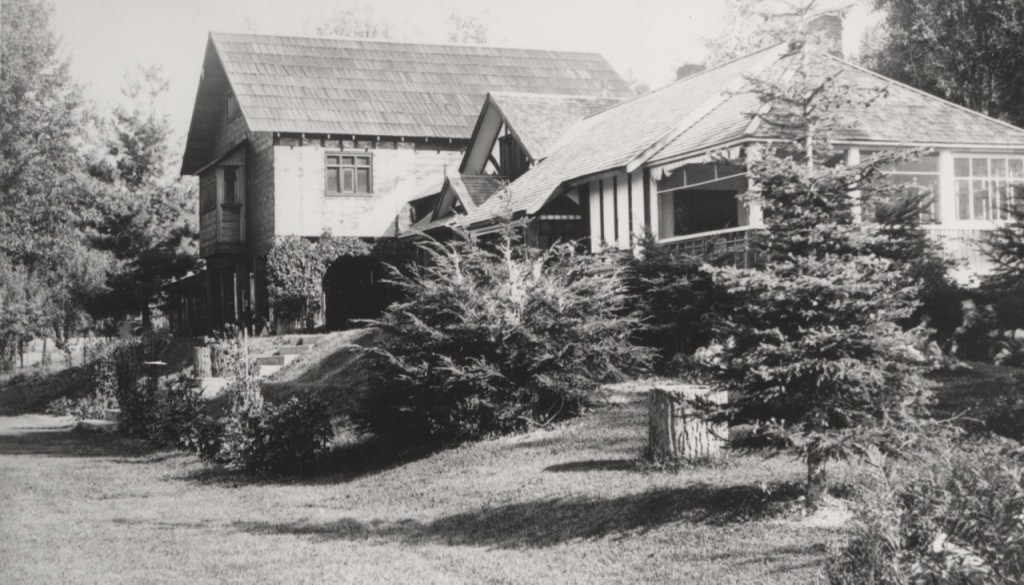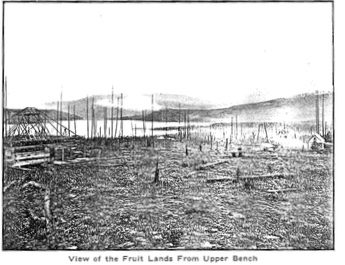Cover of brochure
Seymour Arm holds the unique distinction of being the only community in the Shuswap and perhaps the entire province that became a ghost town twice. While its gold rush era history, when it went from boom to bust in less than a year, is legendary its reincarnation as a fruit growing centre is less well known. In 1908, Seymour Arm Fruit Lands Limited was established with its head office in Vancouver after purchasing 6,500 acres. The company began a marketing program to sell 5-acre lots to potential settlers primarily coming from England.
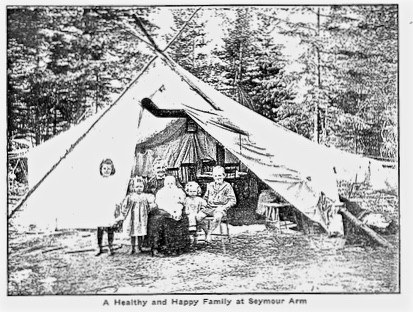
A 30-page advertising brochure was published in 1910 that glorified the potential of the area for growing fruit without the need for irrigation. Claims from agricultural experts were presented about the quality of the sandy loam soil and mildness of the weather in the valley protected by the surrounding mountains. And perhaps the most outrageous claim in the brochure was that the lake “never freezes over.”
Another preposterous claim was the ease of transportation, thanks to the Shuswap Lake steamers that provided a key link to Sicamous and the railway.
In addition to the claims of generous profits from growing fruit on small acreages, the brochure explained how more crops could be cultivated in the spaces between the fruit trees. The list of potential fruits that could be grown included, apples, pears, plums and cherries.
Opportunities for sports, including boating, fishing, swimming, climbing and hunting were also touted. The brochure includes numerous photos that show a burnt over landscape, a hotel (still standing), school and homes under construction. Prices varied from $125 an acre for bench land and $100 an acre for bottom land, “suitable for celery.” In addition, the company offered to clear the land for $50 an acre.
Prospective buyers were led to believe that the agricultural potential of Seymour Arm was equivalent to Salmon Arm and that it was “even more protected from climatic extremes.” An added bonus for Seymour Arm was the potential for a “mining revival” thanks to the large showing of silver lead ore in the nearby Cottonbelt Range.
Another enticement in the brochure reveals the bigoted mindset of some early settlers, “It should be specially noted that there are no Indian reservations in the Seymour Valley. Only those settlers in other districts whose misfortune is to have Indian neighbors know what an important advantage it is to be without them.” Obviously, the authors of the brochure were unaware of how dependent many settlers were on the inexpensive labor they gained from Indigenous people.
The promises did not end with just the prospects of financial success from fruit farming. Plans included a large town site, with a water system from the Seymour River. As well, the company had plans to provide electricity using hydroelectric power from a dam at Seymour River Falls. The Fruit Lands Company also advertised employment opportunities, such as building, fencing and land clearing.
Within one year, Seymour Arm had a population of over 200, making it the largest community on the lake after Salmon Arm. In 1915, the first fall fair was held on the town wharf in front of the hotel. The displays included produce, flowers, fruits, crafts and baking and besides the entrees from Seymour, they also came from Albas, Sorrento and Anglemont.
Reality began to strike between 1914 and 1916, when many settlers left to fight in World War I, leaving their families behind to suffer financial ruin. Adding to the calamities, in 1916 a severe frost hit killing most of the fruit trees. As a result, the Fruit Lands Company, which was some $400,000 in debt, declared bankruptcy. Most of the settlers were forced to leave and most of the land reverted to the crown for lack of tax payments.
The Colling’s first structure was built with rough split cedar lumber
A few settlers remained and found work in the forest industry. The hotel closed in 1925 and the one family, the Collings, that still managed to operate a small fruit cannery had to quit when the cost of transportation and labour become too expensive. The supply of goods during the winter to the remaining few pioneers ended when icebreaker, the Maude Annis was condemned. By 1940, Seymour Arm was nearly deserted once again.
POSTSCRIPT
Collings was a world famous artist, whose watercolours are still renown today. The family built an English Style estate complete with formal gardens. The property will soon be for sale. Here is a photo of the estate taken circa 1930.
More images from the brochure:
